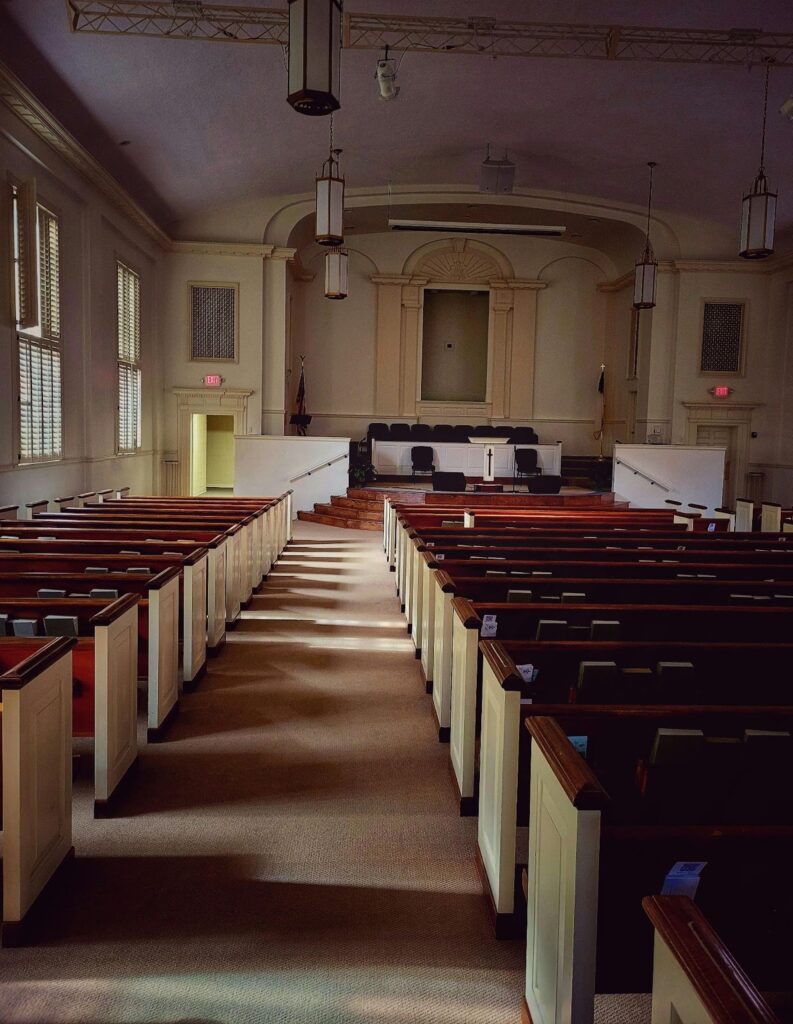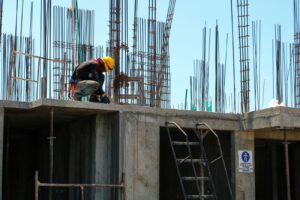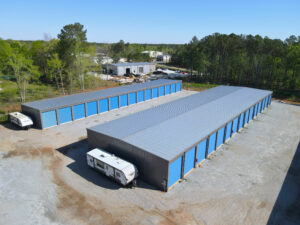Churches play a vital role in their communities, providing spiritual guidance, support, and a place for worship. Despite reports stating a decline in overall church membership, the demand for church loans and applications is on the rise, driven by the growing need to meet church loan requirements for new construction, renovations, and expansions.
In this article, we will explore the requirements and considerations involved in obtaining a church loan, as well as the role of leadership in the process.
Table of Contents
- The Basics of Church Loans
- Key Factors Lenders Consider
- Types of Church Loans
- Preparing for a Church Loan Application
- The Role of Leadership in Securing Loans
- Conclusion
- Frequently Asked Questions
The Basics of Church Loans
At its core, a church loan is a financial tool used by religious organizations to fund a variety of projects, from constructing new church buildings to refinancing existing debt.
These loans are typically provided by banks, credit unions, or specialized lenders who understand the unique needs of churches.
When a church embarks on a new construction project, a loan can be a vital resource to cover the significant costs involved.
From architectural planning to construction materials and labor, the expenses can quickly add up.
Church loans offer a structured way for religious organizations to manage these costs over time, allowing them to focus on their mission and community outreach.
Check out: Blueprints And Ideas For Church Plans
What Is a Church Loan?
A church loan is a financial agreement between a lender and a religious organization. It allows churches to finance important projects, such as building expansions, renovations, or equipment purchases.
Moreover, church loans often come with specific terms or requirements tailored to the unique needs of religious institutions.
Lenders may offer flexible repayment schedules or lower interest rates to accommodate the fluctuating nature of church finances.
This specialized approach recognizes the importance of supporting churches in their efforts to grow and serve their congregations.
Why Churches Need Loans
There are several reasons why churches may need to seek financing. Some common reasons include the need to accommodate a growing congregation, repair or upgrade current facilities or consolidate existing debt.
Church loans provide the financial means to accomplish these goals and continue serving the community.
For many churches, taking out a loan is a strategic decision that enables them to expand their outreach and impact. By investing in their physical infrastructure or programs, religious organizations can create a more welcoming and functional space for worshipers.
This investment not only benefits the church community but also has the potential to attract new members and foster a sense of belonging and connection.
Did You Know?
Church loans often have different terms and interest rates than traditional commercial loans. These loans may have higher interest rates due to the perceived higher risk associated with lending to nonprofit organizations.
Key Factors Lenders Consider
When evaluating a church loan application and requirement, lenders take various factors into account to assess the church’s ability to repay the loan. Let’s explore two significant factors lenders consider.
Church’s Financial Health
One crucial factor lenders consider is the financial health of the church. Lenders want to ensure that the church has a stable and reliable source of income to repay the loan. This includes examining the church’s financial statements, budgeting practices, and recent giving trends.
Demonstrating a history of responsible financial management can greatly increase the church’s chances of loan approval.
Moreover, lenders may also analyze the church’s cash flow to determine if it can comfortably meet its debt obligations. They look at the ratio of the church’s income to its expenses to gauge its financial stability.
A healthy cash flow indicates that the church can manage its current expenses while also servicing the loan.
Membership and Attendance Figures
Lenders also consider the size and engagement level of the church’s congregation. Membership and attendance figures provide insight into the church’s potential for growth and financial stability. Lenders may request information on the average attendance, active membership, and any recent trends in membership growth or decline.
Furthermore, lenders may inquire about the demographics of the church’s congregation to understand its diversity and outreach.
A diverse congregation can indicate a broader community impact and potentially more significant support for the church’s activities and financial health.
Lenders recognize the importance of a strong and engaged community in sustaining the church’s operations and loan repayment capacity.
Types of Church Loans
There are various types of church loans and requirements available to cater to the specific needs of religious organizations. Let’s take a closer look at two common types of church loans.
Construction Loans for Churches
When churches embark on construction projects, such as building a new sanctuary or expanding their existing facilities, they often require construction loans.
These loans provide the necessary funds to cover construction costs, including materials, labor, and permits. Construction loans typically have specific provisions and repayment terms tailored to the unique nature of church-building projects.
Church construction loan requirements are designed to help religious organizations bring their architectural visions to life.
Whether it’s constructing a grand cathedral or renovating a historic chapel, these loans offer churches the financial support needed to create spaces that foster community, worship, and outreach.
From groundbreaking ceremonies to the final touches of stained glass windows, construction loans play a vital role in shaping the physical presence of a church within its community.
Refinancing Existing Church Debt
In situations where a church has accumulated debt from previous loans or expenses, refinancing can provide a way to consolidate and potentially reduce the overall debt burden.
Refinancing existing church debt involves obtaining a new loan with favorable terms to pay off existing loans. This allows churches to streamline their financial obligations and potentially lower monthly payments.
Church debt refinancing is not just about managing financial liabilities; it’s also about creating a stronger foundation for the future.
By restructuring debt through refinancing, churches can free up resources to invest in mission-driven activities, community outreach programs, and essential maintenance projects.
This strategic financial move can help ensure the long-term sustainability and growth of the church, enabling it to continue serving its congregation and community for years to come.
Preparing for a Church Loan Application
Meeting the requirements of a church loan demands careful preparation and documentation. Here are two important steps to consider when preparing for a church loan application.
Gathering Necessary Documentation
When applying for a church loan, it is essential to gather and organize all the necessary documentation.
This typically includes financial statements, tax returns, a budget proposal for the project or expenses, and any other supporting financial information.
Providing comprehensive and accurate documentation helps lenders evaluate the church’s financial position and loan repayment capacity.
Additionally, it can be beneficial to include a detailed history of the church, highlighting key milestones, community involvement, and any significant achievements.
This background information can give lenders a better understanding of the church’s values and impact, potentially strengthening the loan application.
Check out: All About Prefabricated Church Buildings

Creating a Solid Financial Plan
A strong financial plan is another crucial requirement for a successful church loan application. The plan should outline the purpose of the loan, the expected costs, repayment terms, and a projected timeline for completion.
It is also important to demonstrate how the loan will benefit the church and its mission to serve the community.
Furthermore, detailing any risk management strategies or contingency plans in the financial proposal can showcase the church’s preparedness and commitment to responsible financial stewardship.
Lenders appreciate thorough planning and transparency, so including these elements can instill confidence in the church’s ability to manage the loan effectively.
Pro tip:
The recommended debt repayment rate for church loans is generally no more than 30% of the church’s annual budget.
The Role of Leadership in Securing Loans
Church leadership plays a vital role in the loan application process. Let’s explore two key ways in which leadership can impact the requirements for church loan approval.
The Importance of a Strong Leadership Team
Lenders often value the stability and effectiveness of the church’s leadership team. A strong leadership team demonstrates the ability to manage financial resources, make informed decisions, and navigate potential challenges.
Lenders may request information about the leadership structure, qualifications of key leaders, and their roles within the church community.
For example, lenders may inquire about the experience and expertise of the church’s financial officer or treasurer. They want to ensure that the individual responsible for managing the church’s finances has the necessary skills to handle loan repayments and financial obligations.
Additionally, lenders may also want to know about the qualifications and background of the senior pastor or head of the church, as their leadership can greatly impact the overall stability and direction of the organization.
How Leadership Can Influence Loan Approval
Church leaders can greatly influence the loan approval process and help with havng a more favorable requirement. By demonstrating transparency, sound financial stewardship, and an effective plan for loan repayment, leaders can instill confidence in lenders.
Additionally, having a positive relationship with loan officers and maintaining open lines of communication can further enhance the chances of loan approval. Transparency is key in building trust with lenders.
Church leaders should be prepared to provide detailed financial statements, budgets, and projections that showcase the church’s ability to repay the loan. This includes demonstrating a history of responsible financial management and a clear strategy for generating income to cover loan payments.
Furthermore, effective leadership involves not only financial acumen but also the ability to communicate the church’s mission and vision.
Lenders are more likely to support a loan application when they understand how the funds will be used to further the church’s goals and benefit the community.
Church leaders should be prepared to articulate their vision and demonstrate how the loan will contribute to the growth and impact of the church.
Check out: A Guide To Fellowship Hall Buildings
Conclusion
Understanding the requirements and considerations involved in obtaining a church loan is essential for religious organizations seeking financial assistance for important projects.
By carefully considering the church’s financial health, membership figures, and the different types of church loans available, church leaders can navigate the loan application process and requirements more effectively.
With thorough preparation, documentation, and effective leadership, churches can secure the necessary funds to continue their vital work and serve their communities.
SteelCo has decades of experience custom designing high-quality prefabricated steel buildings and worship centers, always putting your precise needs first.
We dropship PEMB materials nationwide, but if your project is in Georgia, and you’re looking for church construction, we can bring it to life from the concept and design stage to project timeline coordination and completion. Learn more about our comprehensive services.
————————
Frequently Asked Questions
Can any church qualify for a church loan?
Not necessarily. Lenders typically prioritize established churches with a history of financial stability, consistent growth in membership and giving, and a clear vision for the project’s impact on the community.
Our church doesn’t have a lot of property in our name… can we still get a loan?
Limited traditional collateral is a common challenge for churches. Lenders might consider alternative structures like pledging future offerings or securing personal guarantees from leadership.
How long does the church loan approval process take?
The church loan approval process typically takes 4 to 6 weeks from the church providing all necessary information. This duration can vary depending on the type of loan, the amount requested, and the church’s financial health.
Can churches apply for SBA loans?
Yes, churches can apply for SBA loans. They must be registered as nonprofit organizations, have a physical location or property, demonstrate a financial need for the loan, and be able to repay it.
What are the typical loan terms for church loans?
The terms or requirements for church loans can vary, but they often include longer repayment periods than commercial loans, sometimes up to 20-30 years. Due to the perceived higher risk, interest rates are often higher than traditional commercial loans. Rates can range from 4% to 7% or more.
























